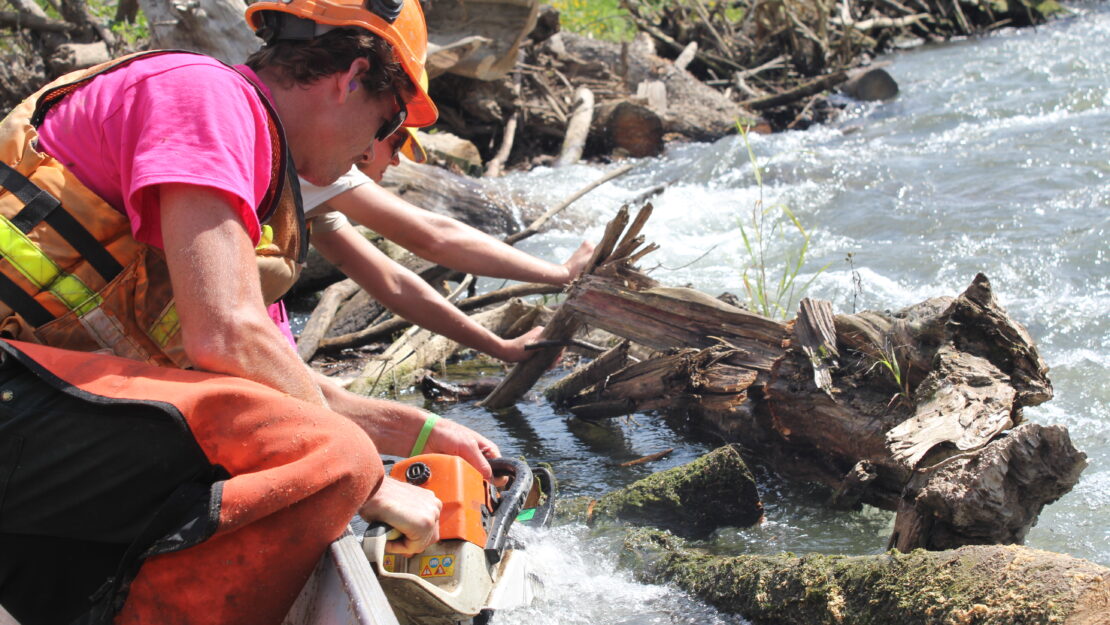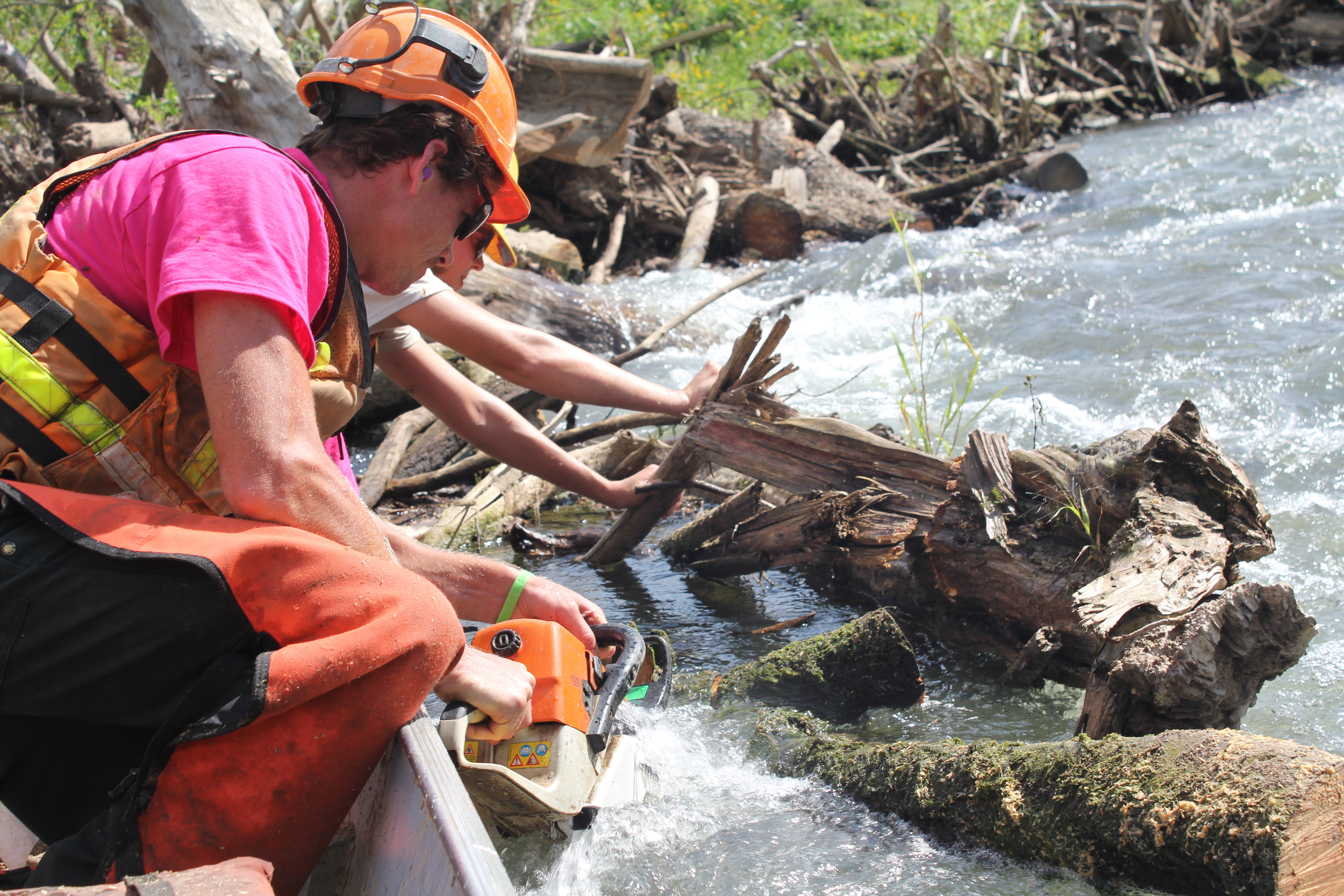Whitewater


By: Sean Fleming
When we first arrived at the logjam, we had already
left our boats behind. Our last two river projects had involved us
dragging our canoes over sandbars and rocks on rivers that have mostly
dried up for the year, so we expected to simply walk up to the 250 foot
logjam on the Whitewater River and dice it up quickly. With the fall
drought, the water levels have been exceptionally low, but the
Whitewater was churning.
I later
learned that the river is primarily spring-fed. Peering into its crystal
blue depths, it looked like it was over ten feet deep in sections.
Brian strapped on some waders and stepped in to see if sections were
shallow enough to still cut without needing a boat. He was nearly swept
away. Had he been, he would have ended up pinned against or sucked into
the tangle of sun-bleached trunks and silt-covered brambles that
disappeared beneath the water. We surveyed the jam, formed a plan for
the next day and then set up our camp and headed home to fetch our jon
boat.
On Tuesday we pushed our boat down the river bank
downstream of the jam, loaded it with our gear and cruised up to the
first section of the jam—a wall of logs and branches pinned against the
root base of a giant cottonwood running up and down the middle of the
river. It took all morning to clear that first section, and in the
afternoon we started work on the main pile of logs blocking the river.
From the downstream side, we realized that the jam itself was built on a
section of rapids formed by the submerged tree beams and the geography
of the riverbed beneath. The water tumbled over three walls that each
held a pool of foaming water. Any wrong turn of the boat could fill it
with water or pin it against a tree and capsize it.
Our crew entered a kind of flow that I’ve
occasionally seen on sports teams and work crews in which the normal
interactions of humans disappear and everyone focuses on the task and
performs as though telepathy is taking place. Communication took place
when it needed to, and silence when it needed to. Time was as lost as
the pieces of trees dropped at the front of the boat and sent
downstream. Soon it was quitting time.
The next day, the focus continued. We rotated in and
out and pouring as much water down our throats as possible in between
shifts, the chainsaw and the boat motor constantly running. We didn’t
need to acknowledge progress or change plans. A tunnel through the legs
formed as we rhythmically chainsawed, backed downstream to flush out the
wood chunks and then charged up the rapids again. A dead deer carcass
added comedy to the situation as we reeled from its stench, covered our
noses with our sweaty shirts and paddled it down the side of the boat
only to have it cling to another log at the base of the jam, but by five
‘o clock that day, we were through to the other side and could freely
boat up and down the chute.
To look back
on those two days of cutting, I’m extremely proud of our crew’s
performance and our work ethos. Danger in a situation like that is
merely another obstacle, a challenge that brings out our best nature.